
If this salsa is a 10, then the best bottled salsa is about a 4. Sometimes the best product you can buy is the one you create yourself. That’s certainly true with salsa. So it’s pointless to compare this with anything that’s dramatically inferior.
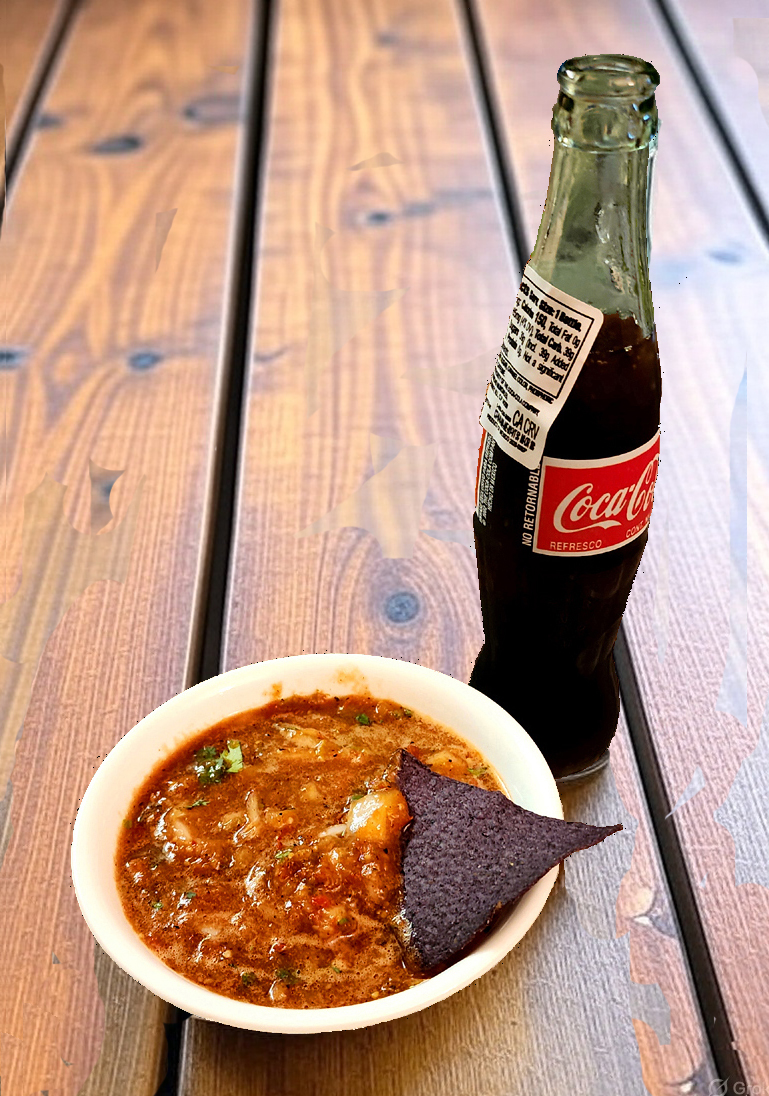
James was introduced to a simpler form of this salsa by a college roommate from Mexico City. Upon watching his roommate make it, he was shocked that some vegetables had to be burned. However, the result was spectacular, and James fell in love with the recipe.
Over the years, through suggestions, additions, and accidents, the ingredient list grew from four to seven vegetables. The original four were tomatoes, cilantro, onions, and jalaños. Incredibly, this recipe now requires at least two varieties of tomatoes, significantly enhancing flavor. Still, relying on Mexican cooking intuition, all ingredients are prepared the Mexican way.
Having tried salsa from many Mexican restaurants, James says he has yet to find one as good as this. He did find one that came close, and after learning they charred and blended green bell pepper, it became the seventh and final addition to this recipe!
A few years ago, James and his wife visited Mexican friends to teach them this salsa. The wife’s sister, visiting from Mexico, was amazed and filled a jar to take home. Later, she told James her friends were blown away, unable to believe a “gringo” made it!
James states this is his most popular recipe, enjoyed by people from every continent except Antarctica by the late 1990s. It’s the flagship product review on Salsa Stop!
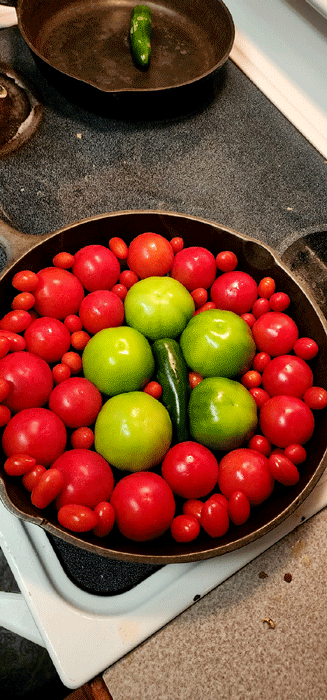
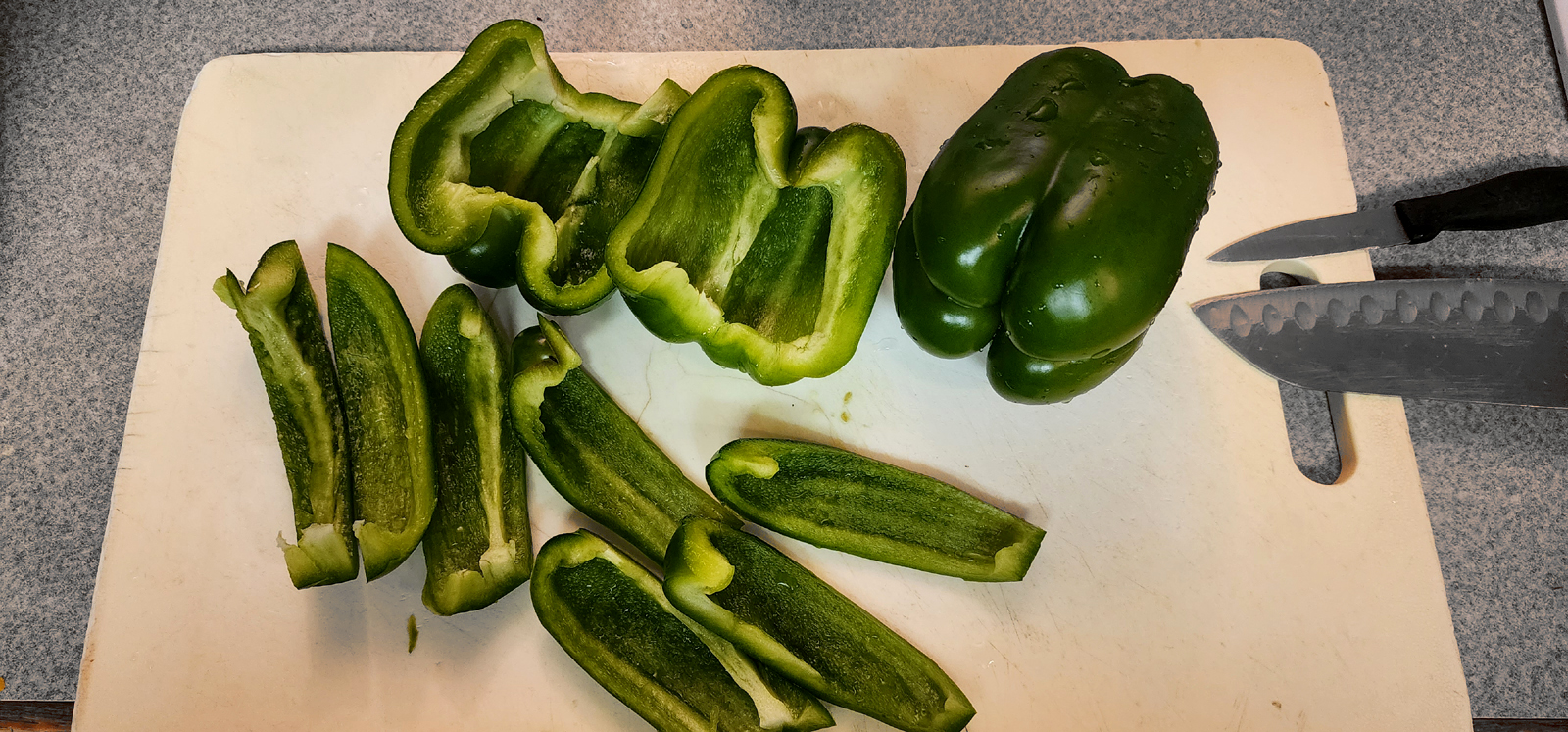
Use a cast iron skillet (10” or 12”) to char vegetables without oil, at medium-high heat, as shown in the animated photo. This is hard on cookware, and cast iron is best, though seasoning may be lost.
Start by charring tomatoes, jalaños, tomatillos, and green bell peppers (cut into strips). Use two skillets if needed: a 12” and a 10” for overflow. Char until blackened on one side, raw on the other, and cooked near the charred area (5-7 minutes per side).
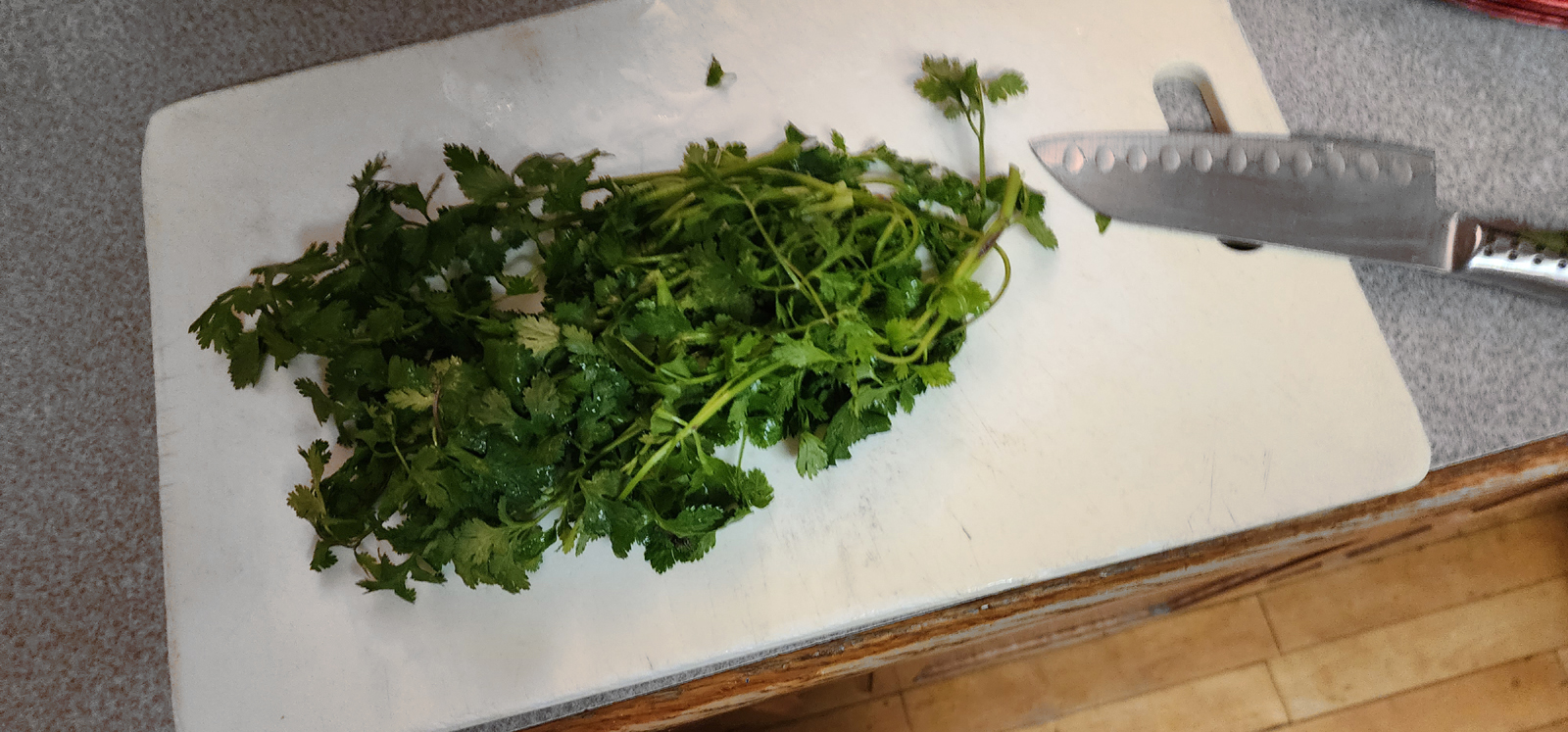
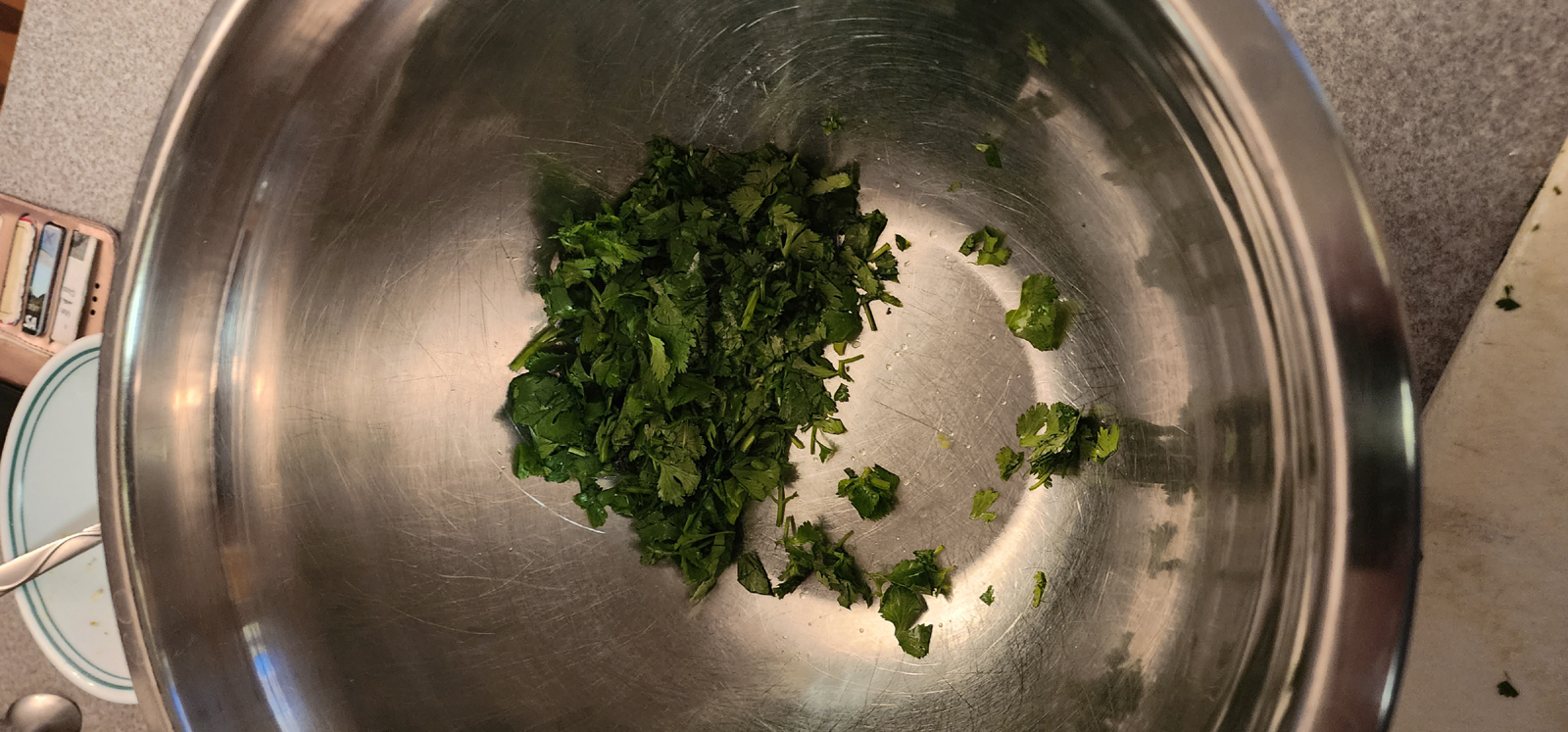
While charring, finely dice cilantro, red bell peppers, and onions (a vegetable chopper helps). Place in an 8-quart stainless steel mixing bowl.
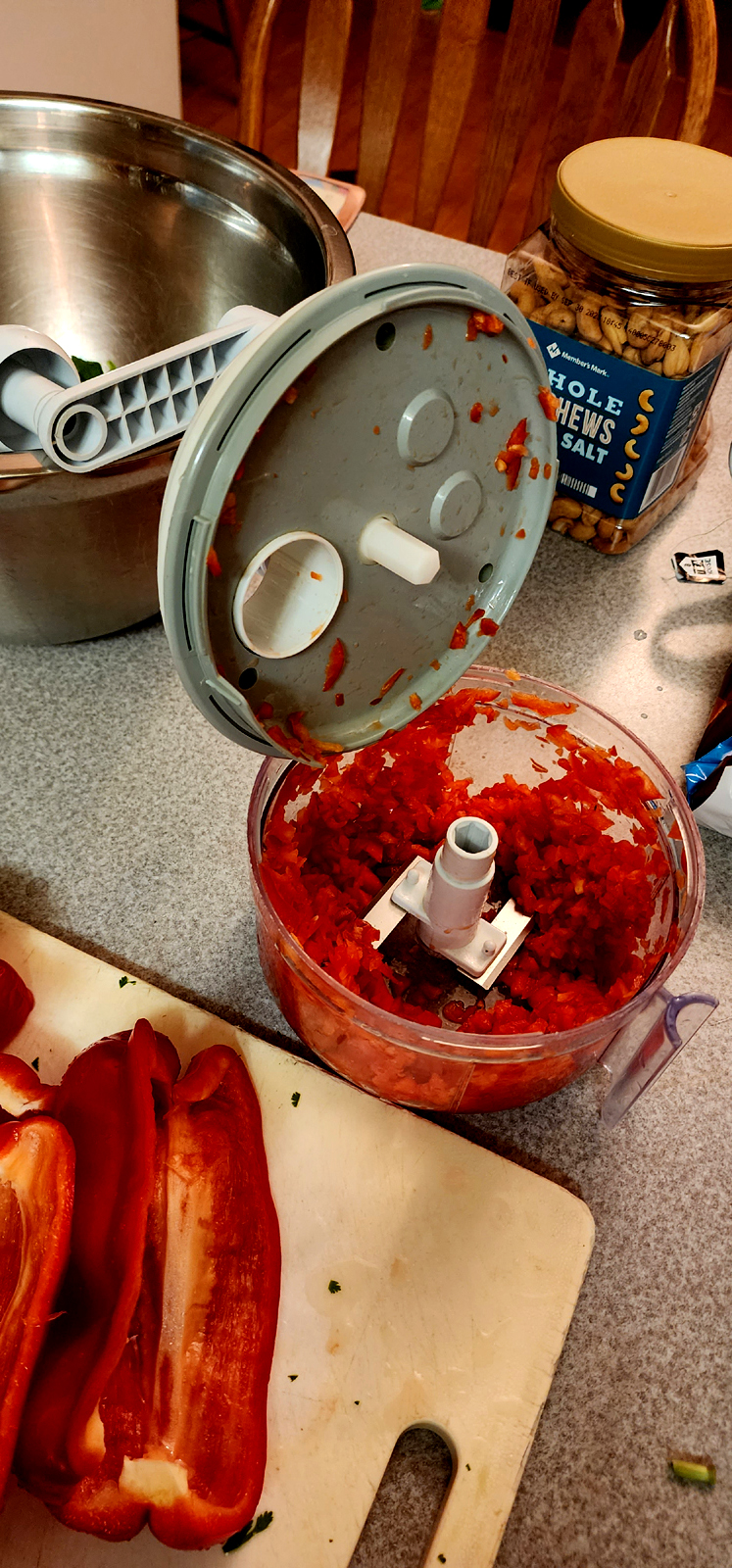
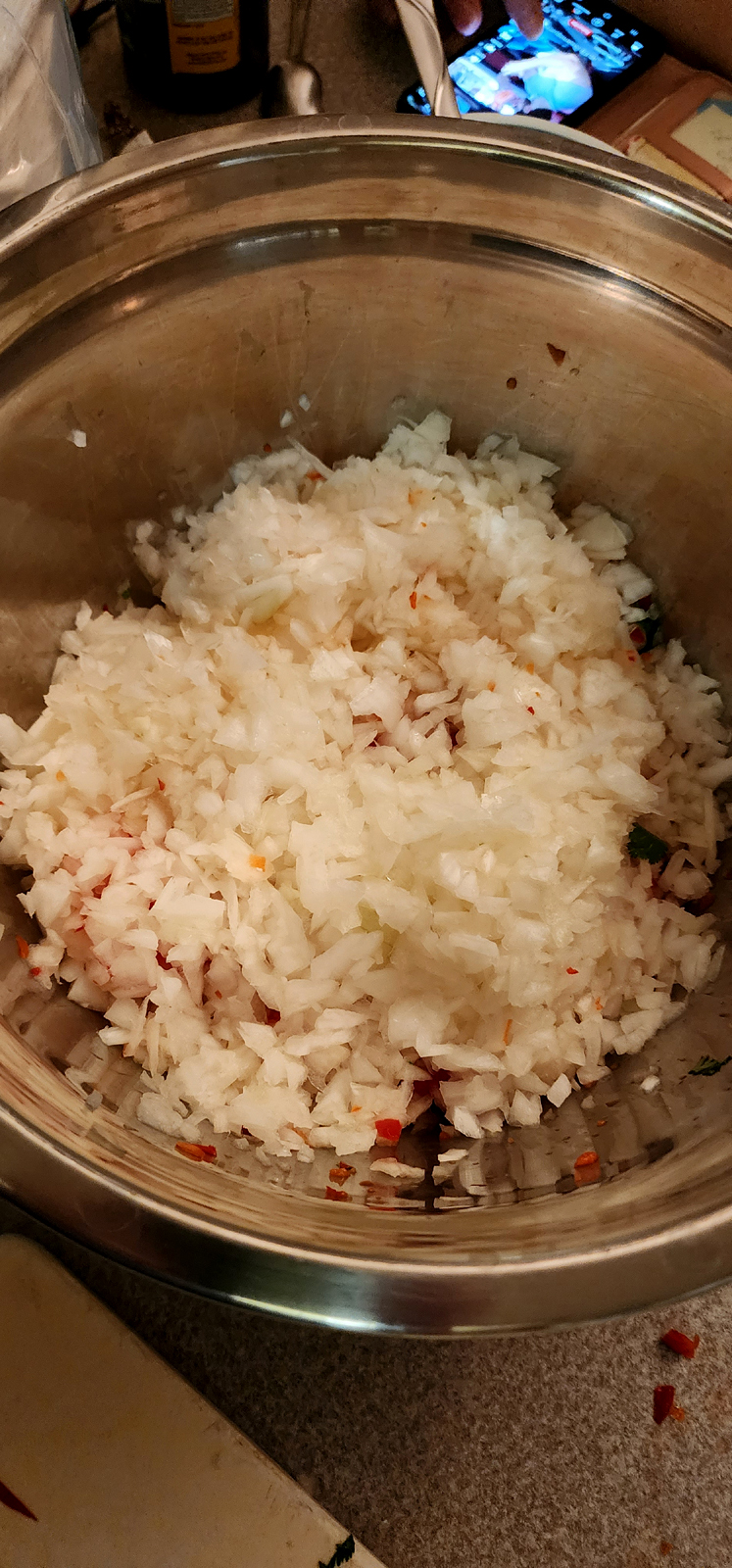
Blend charred vegetables (including some scraped char for flavor) until slightly chunky, about 10-15 seconds. Scrape easily removable char from the skillet for a grilled flavor boost.
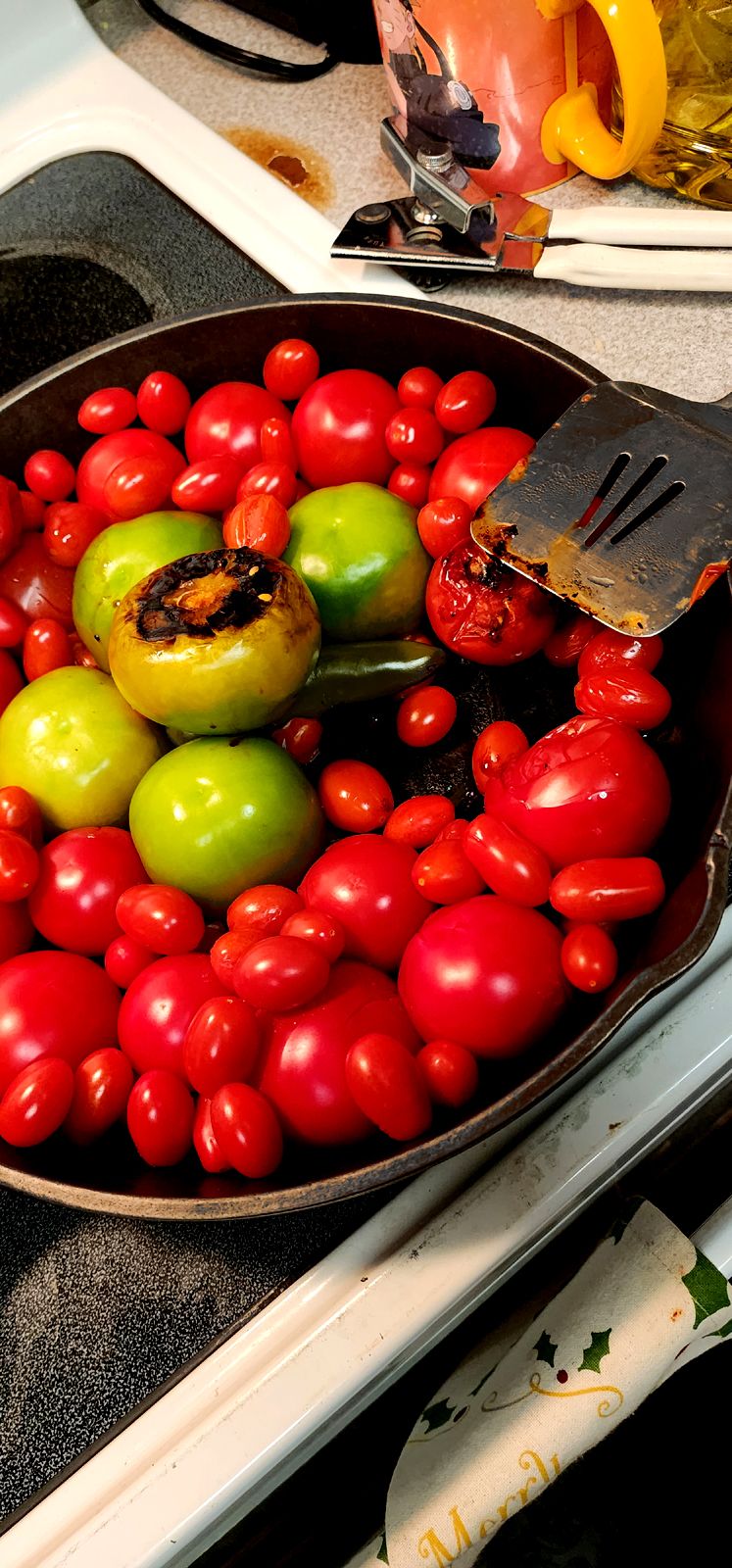
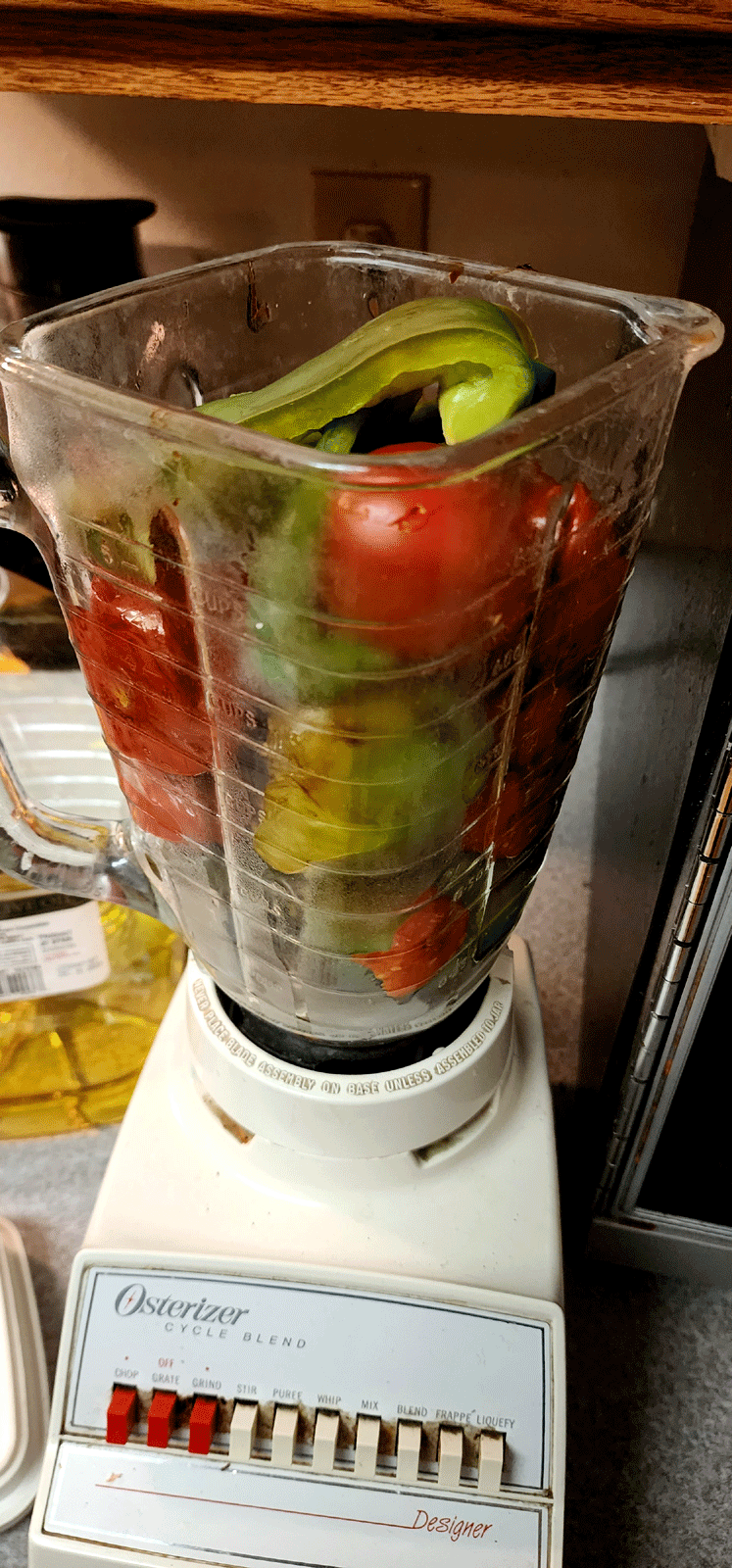
Pour blended vegetables into the mixing bowl with diced vegetables. Add salt, mix well, and taste with a chip. Adjust seasoning as needed.
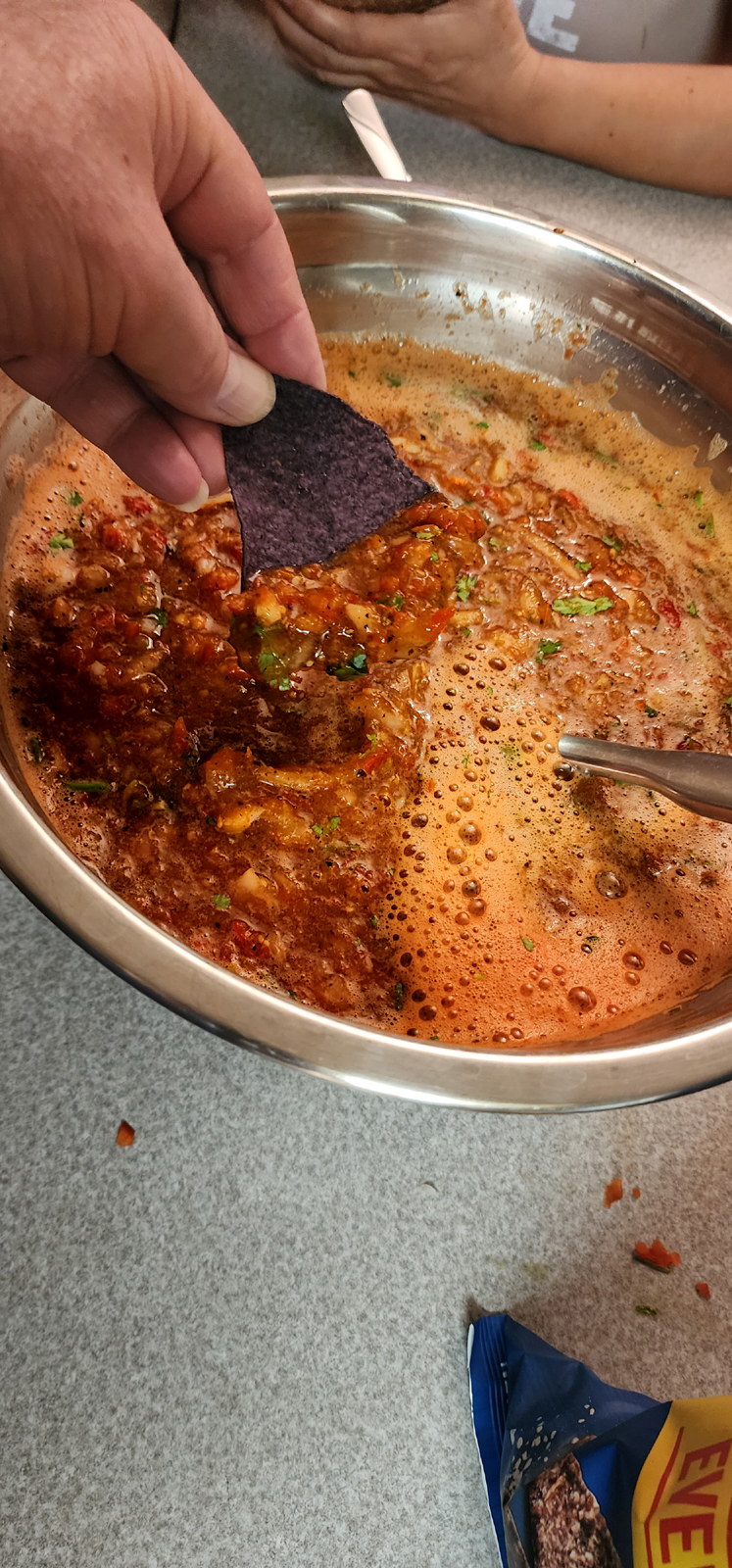
Cast Iron Cleaning Tip: Soak skillet in warm water for 5 minutes, scrape residue with a thin-edged metal spatula, and dry on low heat to prevent rust.